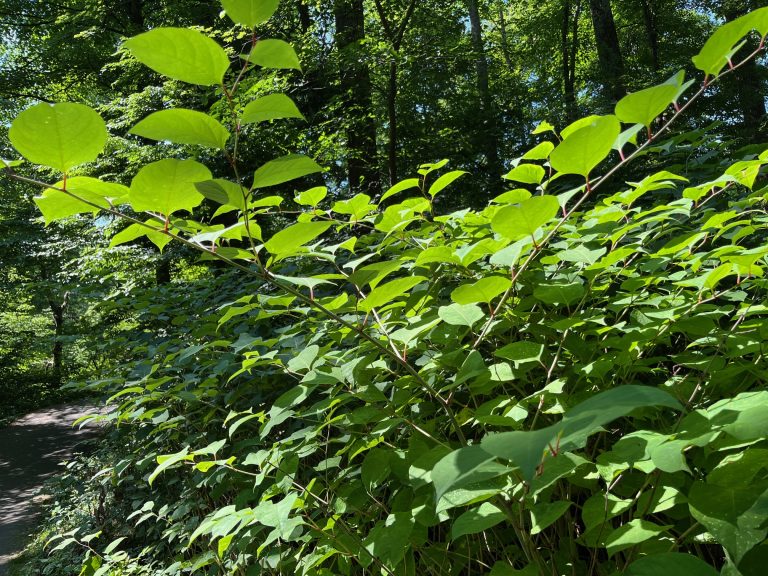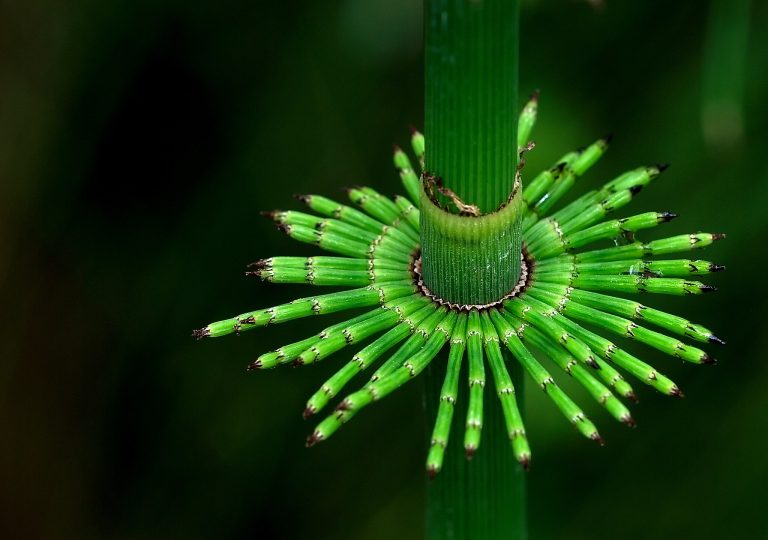As a natural pioneer of the inhospitable slopes of volcanoes, Japanese Knotweed is almost impossible to kill. Casually introduced as an ornamental for its feathery summer flowers, this large herbaceous perennial has achieved invasive status around the world.
Although it is a veritable menace to other plants, displacing them with its robust and aggressive growth, it is not a bit harmful to humans. In fact, it is a versatile edible with some of the most powerful healing compounds found in the natural world.
A stranger with many names

With its introduction to multiple areas at different times in history, taxonomists bestowed Japanese knotweed with not just one, but three separate genera. The exact same plant may be botanically referred to as Reynoutria japonica, Polygonum cuspidatum, or Fallopia japonica, depending on where you are.
Its common names vary as well, including Chinese knotweed, bushy knotweed, and Mexican bamboo. Like rhubarb and buckwheat, knotweeds belong to the Polygonaceae family, characterized by their many (poly) joints, or knees (gony). The plant is sometimes mistaken for bamboo, since the stems bear similar markings at the nodes; but the two plants are actually unrelated.
Understanding Japanese knotweed
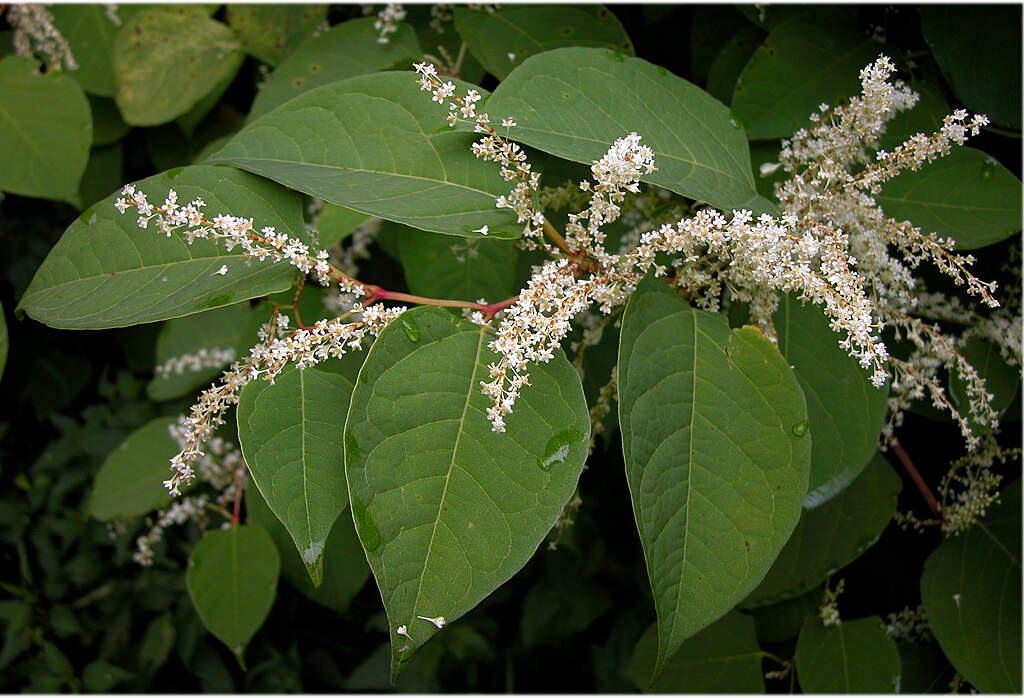
As is often the case, Japanese knotweed was intentionally introduced as a plant suitable for conditions unfavorable to other plants. We have since learned — a little too late — that its aggressive nature and adaptability make it very difficult to eradicate once established.
Success
You are now signed up for our newsletter
Success
Check your email to complete sign up
Japanese knotweed’s tough, woody roots can reach depths of over 10 feet, delving into hard, dry, rocky soil. These fibrous roots support a network of modified stems called “rhizomes,” the chief agent of reproduction. Vegetative growth from the rhizomes shoots up in the early spring, forming dense colonies of leafy stalks, up to 15 feet tall.
The plant can also spread by cuttings of any size — as small as 2 mm, and the flowers produce countless viable seeds (except in the UK, where only female plants were introduced).
Dealing with Japanese knotweed requires perseverance over the course of several years, usually focusing above ground since root removal is unfathomably labor intensive. One may put an extraordinary effort into eliminating the plant, only to have it spring back from the roots (which can go dormant during unfavorable conditions). Even the use of chemical herbicides has limited effectiveness. In most cases the best we can do is to control its spread.
Given that Japanese knotweed is seemingly here to stay, we are fortunate in that it has many practical uses. From natural medicine to musical instruments, let’s look at what Japanese knotweed can do for you. Perhaps you will be inspired to do your part in controlling its spread.
A tasty wild edible
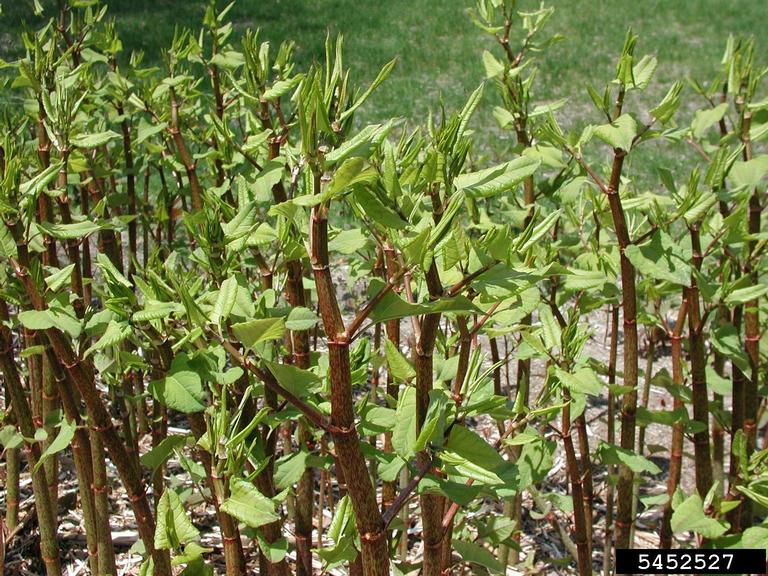
Although deer don’t seem to care for it, Japanese knotweed is safe for most of our domesticated grazing animals, and us too! The shoots — especially when young and tender — are edible, nutritious, and tasty enough that some chefs use them in their restaurants. The stems are described as tasting similar to rhubarb, while the leafy tips may be compared with fiddleheads — a highly regarded wild edible from emerging ferns.
The best time for foraging is early spring. Plump, young shoots are tender and succulent, although it is recommended to peel off the tough skin first. They can be chopped to use like rhubarb in desserts or preserves, cooked like a vegetable or brewed into beer. They are also said to make fine pickles.
Unlike some wild edibles, there is no danger of over-harvesting Japanese knotweed. The only danger is increasing its population, since the plant can be quite destructive. The roots have been known to penetrate concrete foundations and roads, and some governments impose hefty fines on those who introduce Japanese knotweed to new areas.
To prevent new infestations, boil or burn any fragments that are not consumed. Never put Japanese knotweed in the compost or discard it outdoors.
Japanese knotweed as a potent medicinal
This pernicious perennial has had a place in traditional Chinese medicine for over 2,000 years. Known as Hu Zhang, meaning “tiger stick,” it is believed to clear heat, expel dampness and support the liver. It is typically used to treat ailments like infections, inflammation, jaundice and burns.
Modern science has verified the presence of dozens of bioactive compounds in the roots, stems, leaves and flowers of Japanese knotweed. Bioactive compounds like anthraquinones, catechin, luteolin, quercetin, and resveratrol, in particular, are noted for their powerful healing properties.
Some recognized functions of Japanese knotweed include anti-bacterial, antifungal, anti-inflammatory, astringent, boosts immunity, improves circulation, reduced autoimmune reactions, and as a synergist with other medicinals.
Potential treatment for Lyme disease
Limited research suggests that Japanese knotweed may have anti-tumor properties, help lower cholesterol, improve heart health, and help maintain eye health; but perhaps the most remarkable aspect of this herb is its potential ability to treat Lyme disease, a serious illness caused by a bacteria transmitted by ticks.
In the past few decades, this vector-borne illness has been on the rise due to expanded tick habitats. Nearly half a million Americans are diagnosed and treated for Lyme disease each year.
Japanese knotweed scores high in its ability to treat Lyme disease for two reasons. First — it offers emodin, an active compound capable of stopping the growth of Borrelia burgdorferi (the bacteria responsible for the disease). Second — it is a good source of resveratrol, a powerful antioxidant which helps treat the symptoms, such as painful swelling of the joints.
Stephen Buhner explains in detail how it works in his book Healing Lyme: Natural Prevention and Treatment of Lyme Borreliosis and Its Coinfections.
Japanese knotweed supplements are available in capsule or tincture form. If you can manage to dig up some roots, try making your own tincture or glycerite.
Environmental assistance
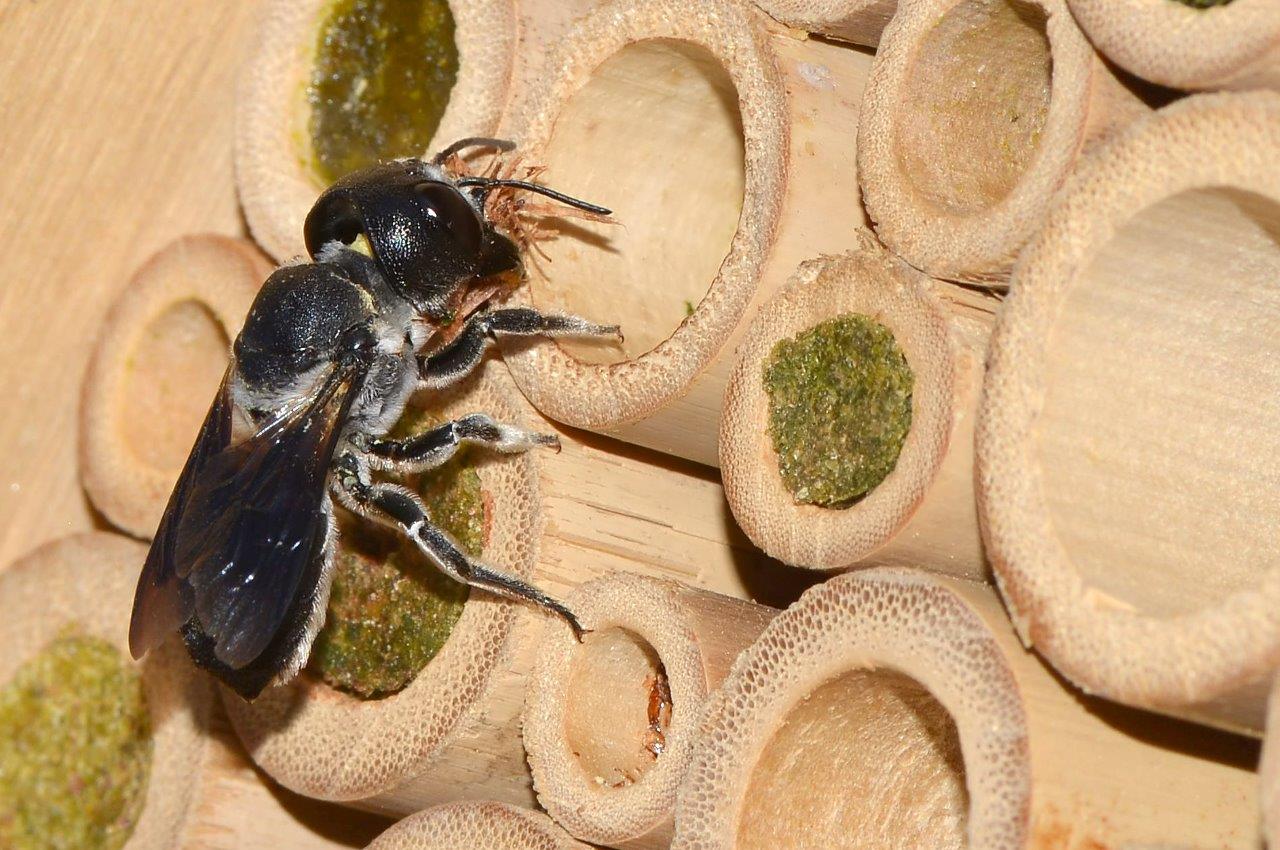
The flowers of Japanese knotweed provide food for honeybees, but as soon as the flowers fade, cut the stalks to prevent them from going to seed.
The plant’s hollow stems can be bundled together to make “bee hotels” to attract solitary bees, a lesser-known — but equally important — group of pollinators.
All-natural musical instruments
A sturdy, hollow stem of Japanese knotweed can be crafted into a fine flute. With the help of these instructions, an exacto knife, and a wood burning tool (available at craft stores for around $15), you can transform a bit of dry stalk into a charming instrument with a uniquely soothing sound.
If you’d rather let nature play the notes, try making a whimsical set of wind chimes with the stems.
Controlling Japanese knotweed
Of course, we can only eat so much knotweed, and hopefully we don’t need so much medicine; so what else can we do to keep it in check? Although you may be tempted to mow it down, this would create countless fragments that, if given moisture, could form new plants.
Instead, it is recommended to manually cut and remove newly emerging growth in the spring, and then smother the plant by covering the area securely with tarps. Eventually the roots will starve from lack of sunlight, but this could take years. Herbicides should be used with caution, as they can be harmful to both the user and the environment.
A stroke of genius from Great Britain may be worth looking into, however: Cover the area in hardware cloth (a galvanized, wire mesh with small openings). Theoretically, at least, the plant will grow through the mesh in the spring and be girdled by the wire as it increases in diameter. The plant will send out more shoots to replace them, but the same thing will happen again. Eventually the roots will exhaust all their energy and you can reclaim the area.



